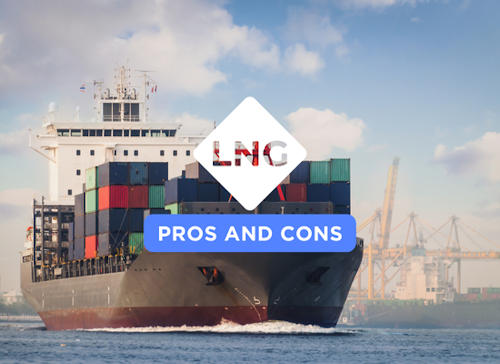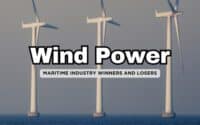The Pros and Cons of LNG-Powered Ships: Easy to Digest Guide

The maritime shipping industry is undergoing a significant transformation as it seeks to meet stringent environmental regulations and embrace sustainable practices. One of the most promising advancements in this domain is the adoption of LNG (Liquefied Natural Gas) as a cleaner alternative to traditional marine fuels. LNG-powered ships offer numerous advantages, from reduced emissions and cost efficiency to regulatory compliance and enhanced fuel availability. However, this transition also presents several challenges, including high initial investment costs and complex infrastructure requirements. Today we will delve into the comprehensive pros and cons of LNG-powered ships, providing an in-depth analysis to help stakeholders make informed decisions about the future of maritime shipping.
** Please send comments / suggestions to editor @ shipuniverse.com
| ShipUniverse: Pros and Cons: LNG-Powered Ships | ||
|---|---|---|
| Aspect | Pro | Con |
| Reduced Emissions | Significantly lower emissions of SOx, NOx, and particulate matter. | Methane is still emitted, a potent greenhouse gas. |
| Cost Efficiency | Can be more cost-effective than low-sulfur marine fuels, especially in regions where LNG infrastructure is well-developed. This can lead to lower operating costs for ship owners. | The initial investment for LNG-powered ships, including retrofitting existing vessels and building new ones, can be significantly higher than traditional ships. |
| Energy Density | LNG has a high energy density, which allows ships to travel longer distances without refueling. This is particularly beneficial for long-haul voyages. | LNG requires cryogenic storage at very low temperatures, necessitating complex and costly storage systems on board. |
| Regulatory Compliance | Using LNG helps ships meet International Maritime Organization (IMO) regulations, such as the 2020 sulfur cap and future greenhouse gas reduction targets, ensuring compliance and avoiding potential penalties. | Compliance with regulations also requires ongoing monitoring and maintenance of LNG systems, which can be resource-intensive. |
| Fuel Availability | LNG infrastructure is expanding globally, making it more accessible in major ports. This growing network supports the feasibility of using LNG as a primary marine fuel. | Despite the expansion, LNG availability is still limited in some regions, posing logistical challenges for ships that require consistent access to LNG refueling stations. |
| Methane Slip | LNG combustion reduces carbon dioxide (CO2) emissions compared to traditional fuels, contributing to a lower overall carbon footprint. | Methane slip, or the unburned methane released during the combustion process, is a concern as methane is a more potent greenhouse gas than CO2. |
| Infrastructure Investment | Investment in LNG infrastructure, such as bunkering facilities and storage, promotes the adoption of cleaner fuels and supports the transition to greener shipping. | The high cost of developing and maintaining LNG infrastructure can be a barrier for ports and ship operators, particularly in developing regions. |
| Technological Advancements | The shift to LNG drives innovation and technological advancements in marine engineering, fostering a more sustainable maritime industry. | The technology for LNG-powered ships is still evolving, and operators may face challenges related to equipment reliability and maintenance. |
| Safety Concerns | LNG is non-toxic and evaporates quickly if spilled, reducing the risk of long-term environmental contamination. | The handling and storage of LNG require strict safety protocols due to its highly flammable nature, increasing operational complexity and training requirements. |
| Economic Incentives | Governments and international bodies may offer incentives, such as tax breaks and subsidies, to encourage the adoption of LNG-powered ships, improving the economic feasibility for shipowners. | The availability and consistency of these incentives can vary, creating uncertainty for shipowners considering the switch to LNG. |
| Noise Reduction | LNG engines generally produce less noise compared to traditional diesel engines. This reduces noise pollution in ports and coastal areas, benefiting both marine life and local communities. | While quieter, LNG engines still produce some level of noise, and the difference might not be significant enough in some operational contexts. |
| Reduced Fuel Contamination | LNG is a cleaner fuel that produces fewer contaminants and residues compared to heavy fuel oil (HFO). This results in less engine wear and lower maintenance costs over time. | Despite reduced contamination, LNG engines still require specialized maintenance and expertise, which can be costly and less widely available. |
| Global Market Trends | The global trend toward cleaner energy sources increases the market demand for LNG-powered ships, potentially enhancing their resale value and future-proofing investments. | Market trends can be unpredictable, and sudden shifts in policy or economic conditions could impact the LNG market, affecting fuel prices and availability. |
| Energy Security | Diversifying fuel sources to include LNG can enhance energy security by reducing dependence on oil. This can provide more stable fuel pricing and supply options. | The geopolitical dynamics of natural gas supply can also be complex, potentially leading to supply disruptions or price volatility in certain regions. |
| Environmental Impact | LNG has a lower carbon footprint compared to conventional marine fuels, contributing to global efforts to combat climate change and promote sustainability. | The production, transportation, and liquefaction of natural gas involve energy-intensive processes, which can offset some of the environmental benefits of using LNG as a marine fuel. |
| Operational Training | The transition to LNG can drive improvements in crew training programs, enhancing overall operational expertise and safety standards in the maritime industry. | Specialized training for handling LNG is required, which can be costly and time-consuming. It also demands ongoing updates as technologies and regulations evolve. |
| Limited Retrofits | New LNG-powered ships can be designed from the ground up to optimize LNG use, incorporating the latest technologies and efficiencies. | Retrofitting existing ships to run on LNG can be technically challenging and expensive, and may not be feasible for all types of vessels. |
| Bunkering Logistics | The development of LNG bunkering facilities in major ports supports the adoption of LNG as a marine fuel and enhances logistical capabilities. | LNG bunkering operations require precise logistics and safety measures, and any disruption in the bunkering supply chain can cause delays and increased operational costs. |
| Regulatory Compliance | Compliance with current and future environmental regulations is a major driver for LNG adoption, ensuring that ships remain operationally viable in the long term. | Navigating the complex and evolving regulatory landscape for LNG use can be challenging, requiring continuous monitoring and adaptation to new requirements. |
| Technological Integration | Integrating LNG systems with existing shipboard technologies promotes innovation and can lead to the development of more efficient and effective maritime solutions. | Integrating LNG systems with existing ship technologies can pose technical challenges and require significant modifications, increasing the risk of operational disruptions and higher upfront costs. |
| Fuel Flexibility | LNG-powered engines can often run on dual fuels (LNG and traditional marine fuels), providing flexibility in fuel choice based on availability and cost. | High storage costs and operational complexity. |
| Market Competitiveness | Adopting LNG can enhance a company's image as an environmentally responsible operator, potentially attracting more business and partnerships. | Market trends can be unpredictable. |
| Reduced Lubricant Use | LNG engines typically require less lubrication, leading to lower operational costs and reduced environmental impact from lubricant disposal. | Specialized maintenance and expertise required. |
| Incentives and Subsidies | Financial incentives, grants, or subsidies for LNG-powered ships from governments and organizations can make the transition more economically feasible. | The availability and consistency of these incentives can vary, creating uncertainty for shipowners considering the switch to LNG. |
| Noise Pollution Reduction | The quieter operation of LNG engines not only benefits marine life but also improves working conditions for crew members on board. | While quieter, LNG engines still produce some level of noise, and the difference might not be significant enough in some operational contexts. |
| Infrastructure Development | The development of necessary LNG infrastructure, such as terminals and bunkering stations, supports the adoption of LNG as a primary marine fuel. | Developing the necessary LNG infrastructure can be time-consuming and capital-intensive. |
| Limited Bunkering Network | The global network of LNG bunkering stations is expanding, making LNG more accessible in major ports. | Despite ongoing expansion, the network is still limited compared to traditional fuel options, posing logistical challenges for long routes. |
| Energy Density Comparison | LNG has a high energy density, though lower than traditional marine fuels, which allows for significant operational range. | Compared to traditional marine fuels, LNG's energy density is lower, requiring more storage space for the same range. |
| Technological Maturity | LNG technology is evolving, fostering innovation and leading to more efficient and effective maritime solutions. | The technology for LNG-powered ships is still maturing, and early adopters may face issues related to equipment reliability and availability of spare parts. |
| Lifecycle Emissions | Using LNG reduces the carbon footprint compared to conventional marine fuels, contributing to global efforts to combat climate change. | The full lifecycle emissions of LNG, from extraction to end-use, can be significant, and methane leakage during extraction and transport can negate some of the environmental benefits. |

Do you have a Maritime Product or Service that may be of interest to Shipowners? Tell us about it here!
Do you have feedback or insights? Please reach out to editor @ shipuniverse.com



